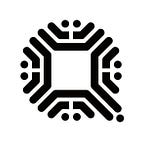The landscape of blockchain technology is constantly evolving, driven by the desire for innovation. Three critical factors that are considered among the many challenges faced by blockchain networks are scalability, security, and decentralization.
In this article, we will delve into the evolving world of blockchain technology, explore the crucial importance of achieving the right balance between scalability, security, and decentralization, and highlight Qtum’s groundbreaking approach to addressing this challenge.
The blockchain technology landscape has undergone significant changes since the launch of Bitcoin in 2008. With the exception of meme coins, nearly every project launched in the years following Bitcoin’s debut has attempted to enhance and expand the ecosystem’s capabilities.
Achieving a balance between scalability, security, and decentralization has been challenging. The concept of “scalability trilemma” was first introduced by Vitalik Buterin in 2021: Why sharding is great: demystifying the technical properties (vitalik.ca)
The Blockchain Trilemma
The trilemma lies at the core of blockchain design. It proposes that any network must make a trade-off between three essential properties: decentralization, scalability, and security.
These three properties can be visualized as the points of a triangle, and a network must choose to prioritize one side of this triangle. In other words, a network that emphasizes security and decentralization will have to compromise on scalability and vice versa.
To give an example, let’s take Bitcoin. Its founder, Satoshi Nakamoto, prioritized security and decentralization, leading to the implementation of the Proof-of-Work (PoW) algorithm.
However, this decision resulted in a very low transaction processing rate of about 7 transactions per second (TPS).
On the other hand, centralized networks like Visa offer high security and can handle over 65,000 TPS. Nevertheless, they compromise on decentralization.
This compromise has been a significant point of disagreement in the blockchain world.
The Road to Scalability
The limited scalability of blockchain technology presents a significant obstacle to its widespread adoption.
For instance, Bitcoin’s throughput of only a few transactions per second can lead to transaction queues during periods of high demand.
While users can expedite their transactions by paying higher fees, this often results in increased transaction costs.
Moreover, developers require a fast and efficient base layer to support complex protocols and microtransactions.
Just as you cannot run the latest video game on outdated hardware, advanced blockchain applications demand a fast and scalable base layer to function efficiently.
Decentralization vs. Speed
The never-ending debate between decentralization and speed takes center stage. Many newer protocols choose to compromise decentralization for the sake of speed.
Usually relying on centralized validator nodes or some kind of delegation to achieve higher throughput, which is completely fine because the end user can choose not to use these systems.
What’s not fine is when blockchain developers hide the ability to pause or halt the blockchain without informing the community.
With the Qtum blockchain, there is no hidden backdoor or centralized way the developers can stop the chain other than publishing a hard fork and seeing if the community accepts the update.
Qtum transactions are validated by permissionless nodes. This means anyone can validate transactions provided they have a device and internet connection to run the software. There’s no requirement to purchase Qtum tokens or convince others to delegate authority to the node.
But what if there was a way to increase speed without sacrificing decentralization? The next section discusses the steps Qtum has taken to push a truly decentralized blockchain to a faster throughput on the blockchain layer while also giving the opportunity to use a layer2 model to achieve speed comparable to centralized projects.
Qtum’s Scalability
Qtum stands out with its unique ability to adjust blockchain parameters, allowing for improved scaling without the need for a hard fork.
At the core level, Qtum can handle about 1,100 TPS, making it far more scalable than Bitcoin.
The implementation of Segregated Witness (SegWit) has boosted Qtum’s throughput by 60%.
In 2021, Qtum executed the Fastlane hard fork, which reduced block spacing from 128 to 32 seconds while also reducing block rewards.
Qtum’s “Decentralized Governance Protocol” allows the community to adjust the block size up to 8000kb without a hard fork, allowing the chain to scale during times of congestion. There’s also a mechanism that allows the community to raise or lower the gas fees, which means Qtum can never become expensive.
This upgrade helped maintain security despite the increasing transaction load, proving that scalability could be achieved without centralization.
If 1100 transactions per second on the base layer is not enough, the community has the ability to use a centralized layer2 network built on top of Qtum, which has the advertised capability of “millions to billions” of transactions per second.
Modern chains can face issues with centralization, and there are several ways to determine if a chain is decentralized. Three important factors to consider are:
1. Concentration of Power: Does the protocol prioritize speed over centralization by having a small number of delegates?
2. Impact on Newcomers: Do early investors have an unfair advantage that excludes newcomers from participating in transaction validation?
3. Core Team Influence: Can the core team unilaterally execute major protocol decisions?
While centralization may increase speed, it can also raise concerns about control and fairness.
Qtum’s Decentralized Speed
Qtum is a blockchain platform that offers scalability without compromising decentralization or security.
It has a base layer that can handle up to 1,100 transactions per second (TPS) and the potential to expand to around 1,600 TPS through SegWit.
Despite this impressive processing speed, Qtum remains fully decentralized and retains censorship resistance and community governance.
The blockchain trilemma is a significant challenge for blockchain networks. However, with its innovative approach, Qtum has found a way to strike the perfect balance.
The future of blockchain lies in being scalable, secure, and decentralized, and Qtum is at the forefront of this revolutionary journey.
